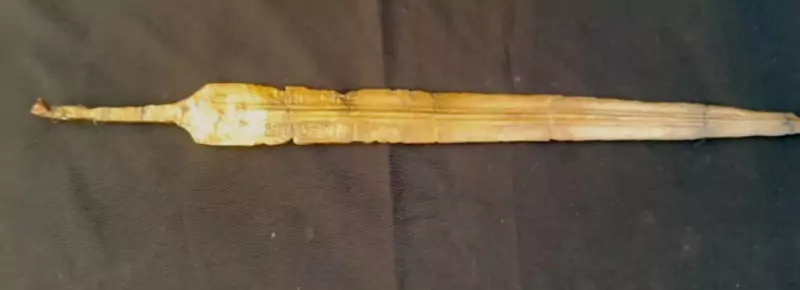
Archaeologists have discovered a fortress from the reign of the Egyptian pharaoh. This fortress is popularly, though not definitively, linked to the biblical account of the Exodus, a period when the Israelites were enslaved.
The finding, confirmed by the Egyptian Ministry of Tourism and Antiquities, dates back to the era of Ramesses II (1279 - 1213 BC), commonly known as Ramesses the Great. The fortress is located in the northwest of the Nile Delta, approximately 60 miles south of Alexandria.
According to Biblical Archaeology, the newly discovered fortress is described as a barracks with warehouses used for storing weapons and food. The mudbrick buildings are organized on two sides of the structure. In addition to the barracks, the archaeologists unearthed various artifacts including weapons, tools, and jewelry that presumably date back to the time of the pharaoh, such as necklaces made from semi-precious stones, a bronze ring, and scarab seals.
Among the significant finds were two limestone blocks inscribed with the name of Ramesses II in hieroglyphics, as well as the name of an official named “Bay.”
A notable discovery within a small barracks room included a bronze sword bearing the cartouche of Ramesses II, which has been preserved. It is believed that the sword belonged to a high-ranking officer and was intended for combat rather than decoration. According to Peter Brand, a professor at the University of Memphis in Tennessee, “The weaponry demonstrates the place was well armed and may even have been able to produce some weapons on site.”
The fortress itself is thought to have been used for defense against Libyan forces to the west and seafaring invaders from the Mediterranean.
The Bible references the place called Ramesses, which some claim is named after the Egyptian ruler. Exodus 1:11, for example, lists Rameses as one of the “store cities for Pharaoh,” while Genesis 47:11 discusses Joseph’s father and brothers receiving property in “the best part of the land, the district of Rameses, as Pharaoh directed.” Additionally, Numbers 33:3 states that the “Israelites set out from Rameses.”
Scholars disagree regarding the identification of the pharaoh mentioned in the Exodus narrative. Christopher Eames, who has extensively studied the debates surrounding the Egyptian king, described Ramesses as the “Hollywood pharaoh” in his article titled “Who was the Pharaoh of the Exodus?” for the Armstrong Institute of Biblical Archaeology.
Eames wrote, “One of the most popular theories claims that the pharaoh during the Exodus was Ramesses II, a 13th-century pharaoh. Despite this popular identification, numerous biblical passages—including the singular verse highlighted by Ramesside proponents (Exodus 1:11)—reveal that neither Ramesses II nor any of the Ramesside Dynasty pharaohs could have been the Exodus pharaoh."
According to Eames, the biblical text suggests that the Exodus occurred during the 15th century BCE, aligning more closely with the Thutmosid Dynasty. He stated, “Digging down into the details, however, it becomes evident that no other Egyptian period, dynasty, and pharaoh gets nearly as close to matching the biblical text as the New Kingdom period’s Thutmosid dynasty pharaoh, Amenhotep II.” Eames also noted that the earliest historians, including Egyptian priests and historians Manetho and Chaeremon, insisted that the pharaoh of the Exodus was a pharaoh named Amenophis.


















